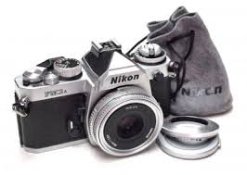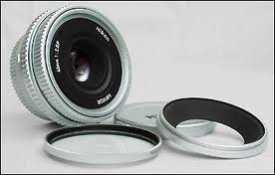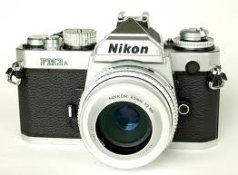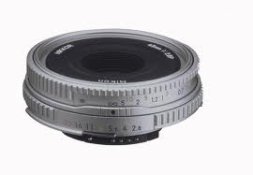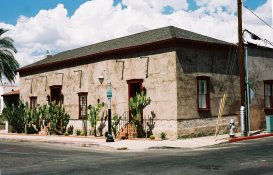With digital you can use Live View, or similar, to ensure focusing accuracy. With film cameras you have to focus accurately in the viewfinder. You will get better image quality from an accurately focused image but not all focusing screens/viewfinders are equal. This is obvious to one and all but easily forgotten. Don't discount the importance of the viewfinder/focusing screen or your own ability to focus accurately.
Another aspect that I think is ignored is that most 50mm lenses really are in about the same ball park. There certainly are differences, often to rendering of OOF areas more so than sharpness, but often these are only visible in direct comparisons in identical circumstances. I tested about a dozen 50mm lenses a few years ago and TBH, there was not a dramatic difference between a $10 Yashica 50/2 ML (worst) and a Leica Summicron-R 50/2 or Contax 50/1.4 (best). What tends to happen is that there are a myriad of minor differences or improvements with 'better' lenses so in some circumstances the differences become obvious whilst in others the lenses can all perform about the same. For example, if shooting at F8 I doubt the differences will be dramatic. If shooting wide open, in very high contrast situations or at night, then that's another matter.
For flare control I've always liked the Contax lenses and I think the Contax 50/1.4 is one of the best relatively cheap lenses on the market. It also has smoother bokeh at identical apertures than the Leica Summicron-R. It's the 50 I tend to use the most (on digital, not film).
The Olympus 50/1.4 is one of the best cheap 50's and combined with the brilliant OM viewfinder I think it's an ideal lens if you like it's slightly pastel colour rendition and funky WO bokeh. It is very sharp stopped down and WO sharpness is quite good too. The OM bodies and lenses are all very small/light and really in about the same size range as most rangefinders.
The Leica Summicron-R is an excellent lens overall but not leaps and bounds ahead of it's competition. It's just an excellent lens.
What differentiates Leica R (and I think Contax) is that most of the makers (Leica) lenses are about as good as each other (some much better, but mostly the later lenses) so when shooting film you can't really pick and choose your lenses like you can with digital where you can mix and match eg Contax 50, Leica R 80, Canon 70-200 zoom, Zenit 16mm etc. With a Leica film body you are stuck with Leica R lenses, but they are pretty much all very good-excellent. The same can't be said of every other brand and I think this is the sole advantage of Leica film cameras/lenses. The Leica R6 (not sure about RE/5) and later bodies all have excellent focusing screens. The Leica R4, has a darker focusing screen but larger image magnification. It's screen can be replaced with later focusing screens to improve focusing dramatically. My favourite Leica Film body is the R4(but only with a later focusing screen), because of it's large image magnification, or the R8/9 bodies.








